Delayed Relay
In projects involving certain kinds of mechanisms, the designer needs to employ a circuit that closes a relay not in the instant that the power is switched on but after a delay of several seconds.
For example, a robot may need to complete a particular movement before a stop mechanism is activated. The circuit shown in Figure 1 can be used for this task.
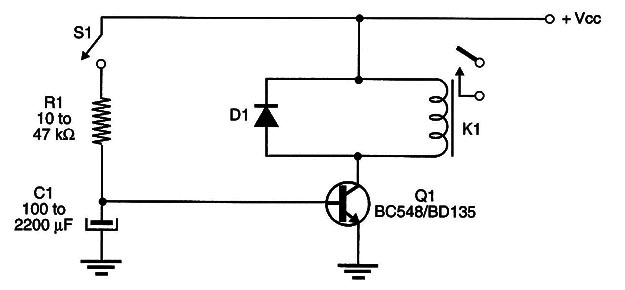
The relay can be any type with a voltage rating between 6 and 15 V and a coil drain of not more than 50 mA. The transistor is a 2N2222, BC548, or any general purpose NPN transistor.
The delay is given by the time constant RC and can be adjusted to assume values from 0.5 to about 10 seconds. Larger intervals are critical, as they depend on capacitor leakage and transistor gain. For large intervals, use other circuits.
Timed Relay
Another block you might need for a project is one that turns a circuit off several seconds after a sensor or switch is opened. The circuit shown in Figure 2 can be used for this task.
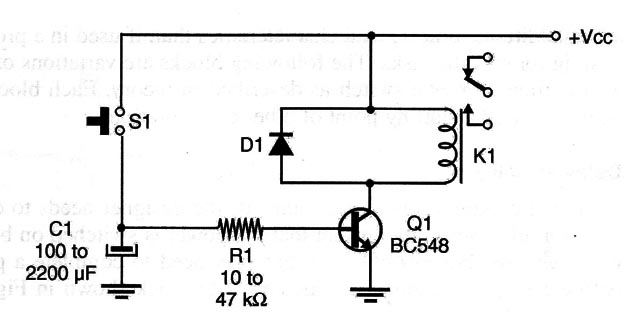
When S1 is activated, capacitor C1 is charged, and the relay is turned on.
When switch S1 is released, the capacitor discharges through Rl, and the transistor keeps he load activated for a time. The length of time depends on C and R values and can be adjusted from 0.5 to about 10 seconds. It is not recommended for higher intervals jue the leakage of the capacitor. Other configurations for large intervals are provided elsewhere.
Long-Interval Delayed Relay
This circuit is used in the same manner as the previous, but it can provide delay intervals of up to 10 minutes, depending on the values of C and R. Figure 3 shows the complete diagram of the block.
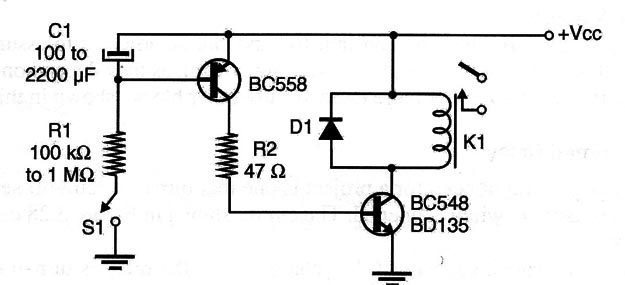
The relay can be any type with a coil current up to 50 mA, and the circuit can be powered from 6 to 15 V according to the relay and the applications. Q1 is any general-purpose NPN transistor such as the BC548 or 2N2222, and Q’ is a general-purpose PNP transistor such as the BC558.
Long-Interval Timed Relay
This circuit is the equivalent of the one shown in figure 2 but for larger time intervals. Time intervals from several seconds to a few minutes can be achieved with the circuit shown in Figure 4.
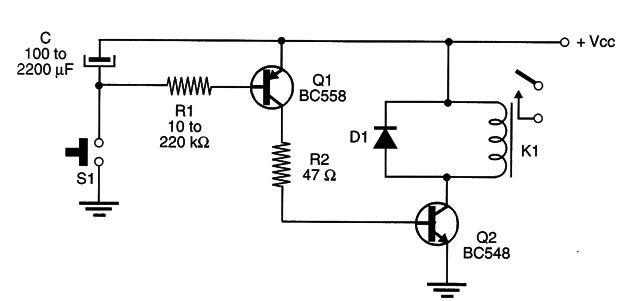
When S1 is activated (S1 can be a switch or any sensor), capacitor C charges, activating the relay. When the switch is released, the capacitor discharges across the circuit, keeping the relay on. The relay will remain on for a time period depengiing on the values of C and R.
Delayed Relay Using Power FET
The high input impedance of a power MOSFET can help the designer to achieve wide time intervals in a delayed relay, as shown by Figure 5.
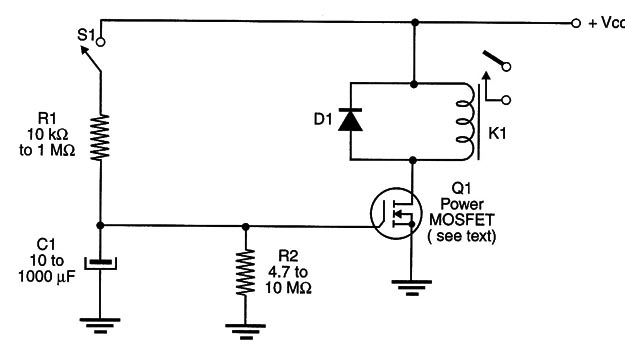
When the sensor or switch S1 is closed, capacitor C1 begins to charge across R1 until the voltage in the gate becomes high enough to turn it on. The high impedance of the FET’s input makes possible the use of high-value resistors in this circuit, meaning longer time intervals.
With a 1,000 µF capacitor and a 1,000,000 ohm resistor, the time delay can be extended to several minutes.
This circuit, like the other blocks, can be used to control other devices, but the designer must keep in mind that the voltage in the load when the circuit is activated (or deactivated) changes slowly. This is an important point to consider when the blocks are used to control solenoids, motors, or other circuits.



